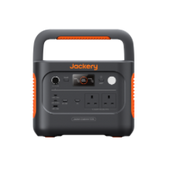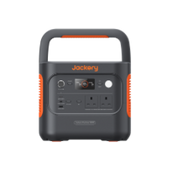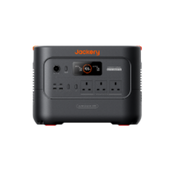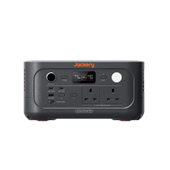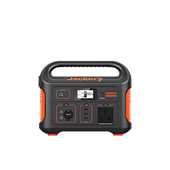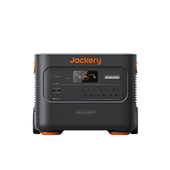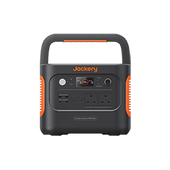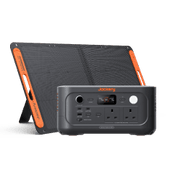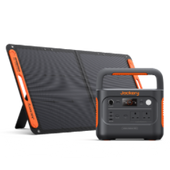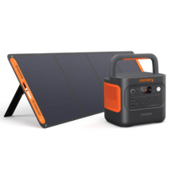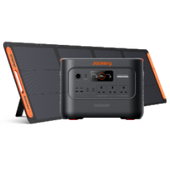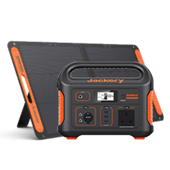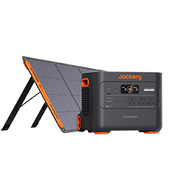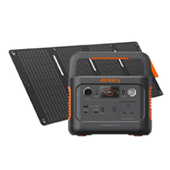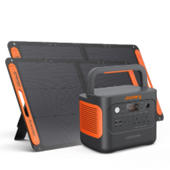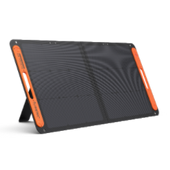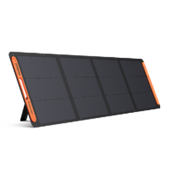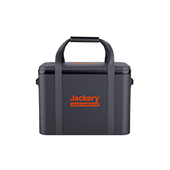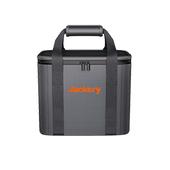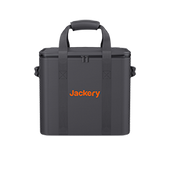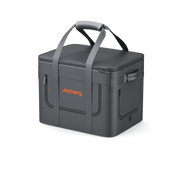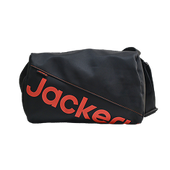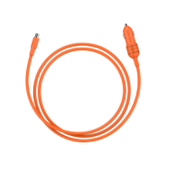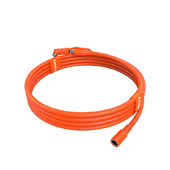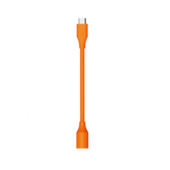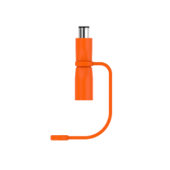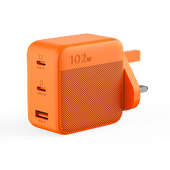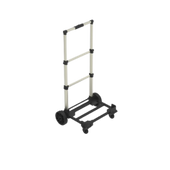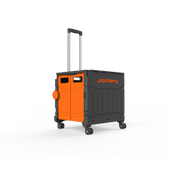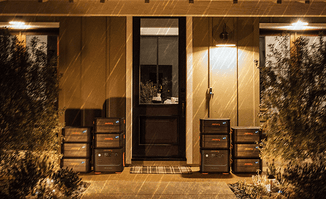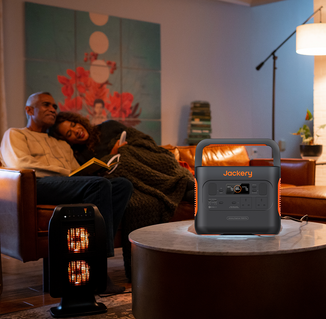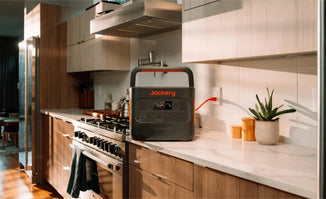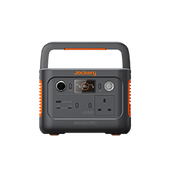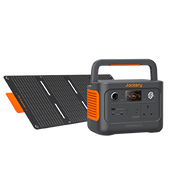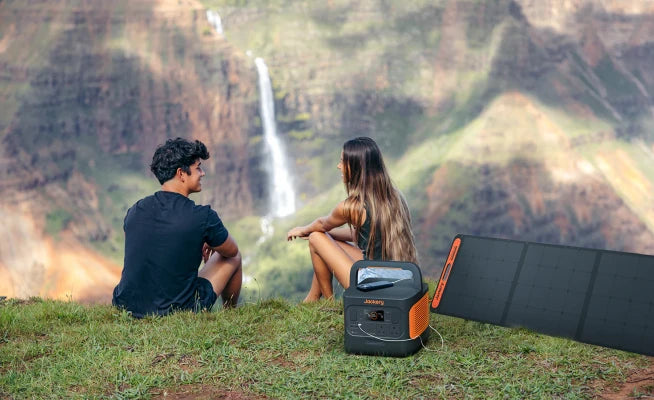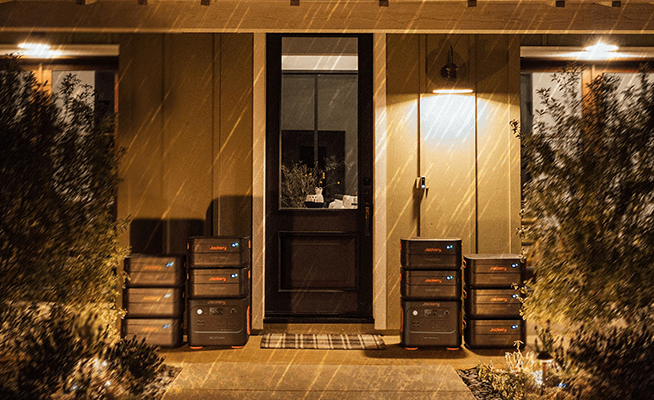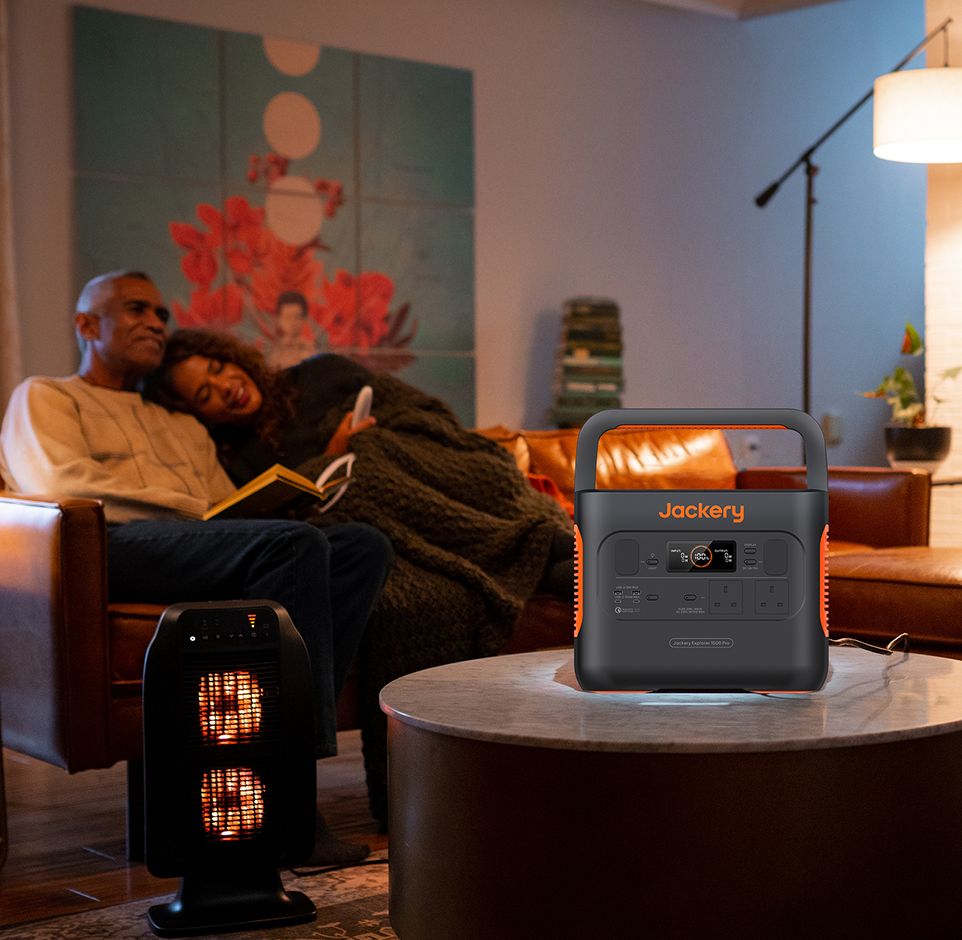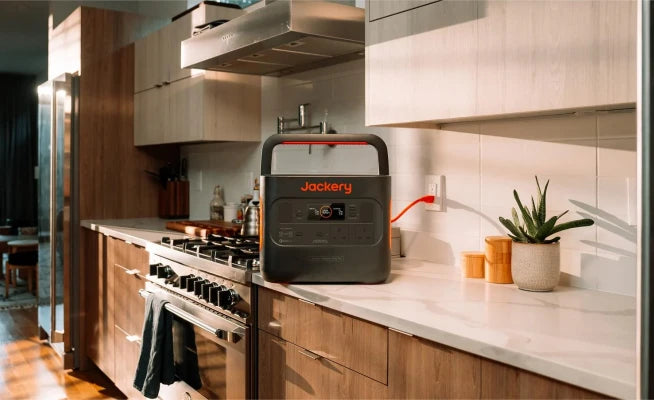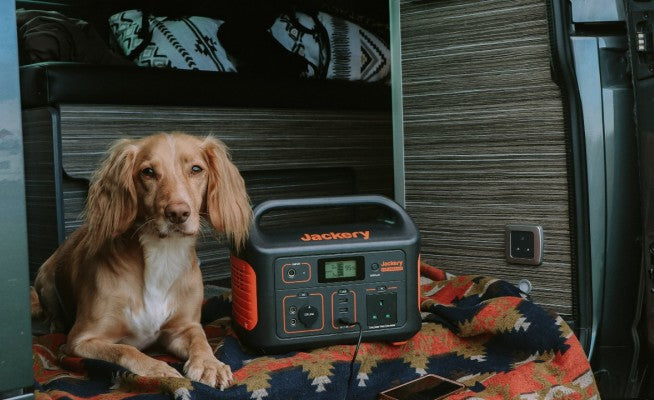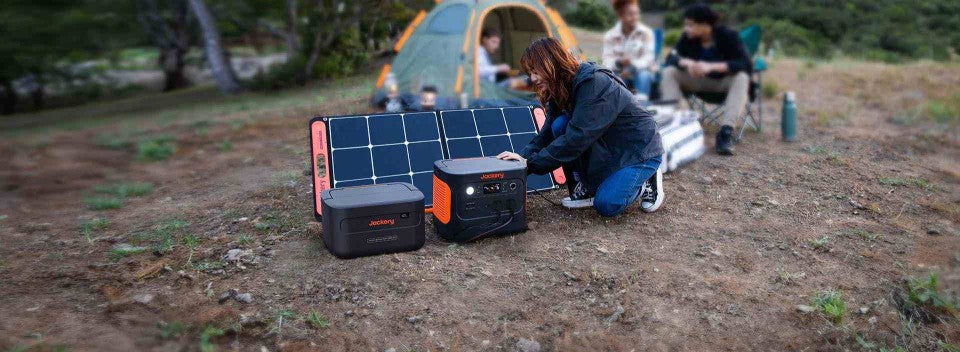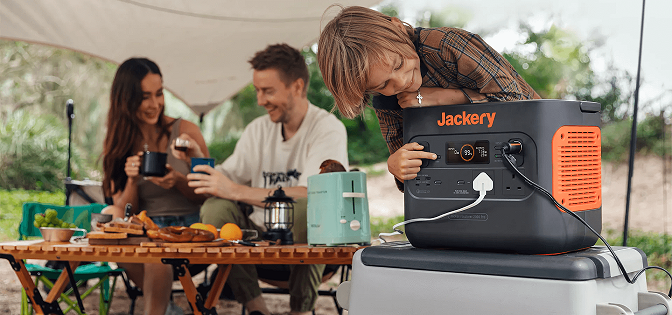In today's fast-paced world, efficiency is essential, especially in the kitchen. If you're tired of waiting for water to boil or want to simplify your cooking routine, consider investing in a Quooker tap.
Not only does the Quooker tap provide instant access to boiling water, but it also saves space, making it an energy-efficient and convenient kitchen solution. However, rising energy prices in recent years have made people hesitate to install a Quooker tap. This blog post will explore how much a Quooker tap costs to run. We will break down the monthly expenses, compare them with traditional kettles, and highlight long-term savings.
|
Key Takeaways: |
|
How Much Does a Quooker Tap Cost to Run?
The Quooker tap, invented by Henri Peteri in 1970, is renowned for its high quality, safety, and efficiency. It works by heating water stored in an internal tank to a boil using an electric heating element, which can be dispensed by simply turning a knob.
As the boiling water in the tank is released, cold water simultaneously flows back into the tank and is automatically heated. However, for some people considering installing a Quooker tap, the primary concern is its running cost.
How Much Does a Quooker Tap Cost to Run?
Quooker invented the first instant hot water tap and launched a range of taps that use very little electricity. Although all Quooker products, different models (including Flex, Classic, Fusion, and Nordic) have slightly different running costs. According to an analysis by Scienceofproperty, a Quooker tap costs £68.48 per year to run.

How to Calculate the Running Cost of a Quooker Tap?
Based on the energy consumption of instant heating and holding, a Quooker Tap's running cost must consider its heating power, holding power and frequency of use. The following calculation is for reference only.
Step 1: Calculate the Instant Heating Cost of a Quooker Tap
The instant heating of a Quooker Tap refers to the power consumed to instantly heat cold water to 100°C or boiling water each time it is used. Quooker taps range in power from 1,600 watts to 2,200 watts. In addition to power, you also need to know the heating time of the Quooker Tap. The basic model of the Quooker Tap usually includes a 3-litre water tank under the sink. It takes 15 minutes to fill and heat the 3-litre water tank thoroughly each time.
Example 1: Assuming a 1,600-watt Quooker tap with a 3-litre water tank, what is the cost per use? (The electricity price per kWh comes from the energy price cap of the third quarter of 2025 announced by Ofgem: 25.73p/kWh)
1.6kW × (1/4) hours × 25.73p ≈ 10.29p
Therefore, the cost of heating 3 litres of water for this Quooker tap is 10.29p, and the cost over a year is £37.56 (heating 3 litres per day).
Step 2: Calculate the Insulation Cost of a Quooker Tap
To ensure hot water is always available, the Quooker tap consumes a small amount of electricity to keep the water in the tank warm during non-use hours, reducing instant heating. Thanks to advanced technology, the Quooker tap only needs 10 watts to keep the water in the tank at 110°C.
Example 2: Assuming a Quooker tap is set to keep warm for 12 hours a day, how much does it cost? (The electricity price per kWh comes from the energy price cap of the third quarter of 2025 announced by Ofgem: 25.73p/kWh)
0.01kW × 12 hours × 25.73p ≈ 3.09p
Therefore, this Quooker Tap's daily insulation cost is 3.09p, and the yearly price is £11.28 (12 hours of insulation per day).
Step 3: Calculate the Total Operating Cost of a Quooker Tap
The total operating cost of a Quooker Tap is its instant heating cost plus the insulation cost.
Based on Example 1 and Example 2, the Quooker Tap's total daily operating cost is 13.38p, and its total annual operating cost is £48.84.
|
Quooker Tap Wattage (W) |
Annual Instant Heating Cost |
Annual Insulation Cost |
Total Annual Running Costs |
|
1,600W |
£37.56 |
£11.28 |
£48.84 |
|
1,800W |
£42.26 |
£11.28 |
£53.54 |
|
2,000W |
£46.96 |
£11.28 |
£58.24 |
|
2,200W |
£51.65 |
£11.28 |
£62.93 |
The data in this table is based on the above calculation method (heating 3 litres of water once a day and keeping it warm for 12 hours) and the energy price cap in the third quarter of 2025 (25.73p/kWh), which is for reference only.
Quooker vs Other Brands of Taps: Running Cost Comparison
With the popularity of boiling water faucets, consumers pay attention to the convenience and safety of products and also pay more attention to long-term operating costs.
Quooker is a well-known instant hot water faucet brand in the Netherlands, known for its fast boiling water and safety technology. Brands like Qettle, Fohen, and Hyco also hold a particular market share. In the following content, we will thoroughly analyse the operating costs of these four brands to help consumers choose a more economical option.
How Does a Quooker Tap Cost to Run?
Quooker is known for its excellent vacuum insulation technology, and the insulation effect is usually top-notch among water storage products. For example, Quooker usually advertises its insulation energy consumption is about 10W. This means its insulation energy consumption is relatively low under the same water tank capacity and settings. On average, the total annual operating cost of a Quooker tap is about £68.48.
How Does a Qettle Tap Cost to Run?
Qettle faucets are also mainly instant hot, immediately providing filtered and boiling water. Although keeping water hot uses almost no energy, cooking large amounts of water simultaneously (such as filling a kettle) takes a lot of time and energy. On average, the total annual running cost of a Qettle tap is around £113.52.
How Does a Fohen Tap Cost to Run?
Fohen also uses vacuum insulation technology, but the efficiency can vary depending on the model. It is generally less efficient than a Quooker. It is cheaper and is often seen as an alternative to the Quooker, but the running costs can be slightly higher. On average, the total annual running cost of a Fohen tap is around £98.50.
How Does a Hyco Tap Cost to Run?
The Hyco also uses insulated water tank technology and is generally considered similar to or slightly less efficient than a Quooker. On average, the total annual running cost of a Hyco tap is around £72.13.
|
|
Instant Boiling Water Taps |
|||
|
|
Quooker |
Qettle |
Fohen |
Hyco |
|
Annual Energy Cost to Keep Tank Hot |
£23.65 |
£82.78 |
£67.77 |
£41.39 |
|
Annual Energy Cost to Heat Dispensed Water |
£30.73 |
£30.73 |
£30.73 |
£30.73 |
|
Total Yearly Energy Cost |
£68.48 |
£113.52 |
£98.50 |
£72.13 |
|
Average Cost of Each Litre of Boiling Water - Pence |
5.77 |
9.57 |
8.30 |
6.08 |
(Data Source: Tapmagic)
This table shows the annual running costs of boiling 10 cups (3.25 litres) of water per day using four popular instant hot water taps.
In short, the average cost of a Quooker tap is currently cheaper than that of other brands. Quooker's excellent heat preservation technology lowers the cost of continuous heat preservation, which is especially suitable for families who brew multiple cups of tea or coffee daily.

Quooker vs Traditional Kettle: Running Cost Comparison
As the cost of living rises, consumers are increasingly concerned about running costs when choosing hot water equipment. Quooker boiling water taps are known for their instant heating technology and safety, while traditional electric kettles are known for their affordability and widespread use. The following content will explore which one has lower running costs, Quooker or traditional kettles.
How Much Does a Quooker Tap Cost to Run?
The advantage of the Quooker tap is that there is no need to wait for the water to boil, which is suitable for scenes that require instant hot water, such as making tea and coffee. Based on the typical daily consumption of 8 cups for British people, a cup of about 250-300 ml of water costs an average of 0.25 to 0.30 pence.
How Much Does a Traditional Kettle Cost to Run?
The advantage of a traditional kettle is that it has zero standby cost and only consumes electricity when heating, with no standby power consumption. However, each time it is used, it starts to heat the required amount of water from room temperature (or the temperature of the last remaining water), which consumes a lot of energy. On average, it costs 7p to boil a whole kettle of water (about 7 cups), while boiling a cup of water (about 250-300 ml) takes about 45 seconds and costs 1.28p. (Data Source: Idealhome)
In short, the traditional kettle has lower operating costs for short-term use or less daily hot water demand. However, if a large amount of hot water is needed daily and the Quooker is used frequently, the long-term operating cost may be lower than that of the kettle. In addition, the kettle's energy waste is constant and will gradually increase over time.
|
Waste Calculation |
Kettle |
Quooker |
|
Reason for Waste |
Due to Overfilling |
Due to Heat Loss |
|
kWh Wasted per Day |
0.27 kWh |
0.24 kWh |
|
%age of total energy |
50% |
51% |
|
Cost of Waste per Year |
£29 |
£26 |
(Data Source: Tapmagic)
Factors Affecting the Operating Cost of Quooker Tap
The cost of running a Quooker tap is determined by electricity prices and energy consumption, among other factors. The main factors that affect the running cost of a Quooker tap are as follows.

Tank Capacity
A larger tank requires more energy to heat the initial volume of water and maintain the water temperature, which results in higher running costs. For example, it takes more electricity to heat a 7-litre tank than a 3-litre tank. Although a larger capacity may reduce the number of daily heating times, it costs more to maintain a larger volume of water at near-boiling temperature.
Tank Location
The ambient temperature of the tank's installation location affects how quickly it dissipates heat. Suppose the tank is installed in a colder environment, such as near a vent. In that case, it will lose heat faster and must be heated more frequently to maintain the temperature, increasing energy consumption and running costs.
Initial Water Temperature
The colder the water enters the tank, the more energy the Quooker tap's heater needs to consume to heat it to a boil. For example, the cold water temperature is usually much lower in the winter than in the summer, so the heating power consumption and running costs of a Quooker tap in the winter will be significantly higher than in the summer.
Frequency of Use
The more frequently the hot water is used, the more times the water is taken, and the more regularly the Quooker tap heats up. This means the Quooker tap consumes more electricity and has higher operating costs. Especially when boiling water is taken frequently, the tank needs to be replenished with cold water and reheated to a cooking temperature, which requires a lot of electricity.
Scale Accumulation
With the increase in usage time, scale will gradually accumulate on the heating element and the inner wall of the water tank of the Quooker tap, seriously reducing the heating efficiency. In the case of excessive scale accumulation, the Quooker tap takes longer and consumes more electricity to heat the water to the set temperature, significantly increasing its operating costs.
How to Reduce the Running Cost of Quooker Tap?
Quooker taps are renowned for their instant heating technology and versatility, but long-term running costs can be significantly reduced through efficient use and regular maintenance.

Reduce Frequent Short-Term Water Draws
Each time a Quooker tap is started, even if it only draws a small amount of water, it may need to heat or replenish hot water. Therefore, try to collect water in batches and collect the water you need in one go. For example, collect the water needed to make a pot of tea or coffee in one go, rather than collecting water in small amounts multiple times.
Regular Cleaning and Descaling
Depending on the hardness of your local water, follow the recommended descaling intervals in the Quooker manual (usually 1-3 months). Generally, the harder the water, the more frequently you must descale. Using the appropriate descaling agent and cleaning method; otherwise, the water tank's thermal insulation may be affected.
Timely Filter Replacement
A clogged filter will reduce the efficiency of the Quooker tap and increase running costs. It is best to clean the pre-filter monthly. Check the filter condition immediately if the water flow rate drops by over 30% or an odour appears.
Strengthen Insulation
Install the water tank under a warm kitchen sink for the best thermal insulation. Also, ensure the insulation on the Quooker tank and connecting pipes is properly installed, intact, and has no gaps. Any exposed metal will lose a lot of heat. If the cabinet space where the tank is installed is ample and ventilated, consider adding additional insulation to the cabinet walls.
Optimise Standby Mode
Don't turn the Quooker on and off frequently to save electricity; doing so will use more energy. The Quooker uses much less energy to maintain the water temperature when on standby than it does to heat the water frequently from cold to boiling. Thanks to high-tech insulation technology, the Quooker tap requires very little energy to maintain the water temperature, only 10 watts. It is best to turn it off completely unless you are away from home for a long time.
Harness the Power of The Sun
When the sun is shining, the free electricity generated by solar panels can directly power the Quooker tap to heat the water and keep it warm, significantly reducing electricity bills. Excess electricity generated by solar panels can be stored in batteries or fed back to the grid to earn money. For example, the Jackery Explorer 3000 v2 or 2000 Plus is a portable power station and can be used with solar panels to power the Quooker tap.

Monitor Energy Consumption
If your budget allows, you can use an intelligent socket or energy monitor to measure the Quooker tap's power consumption. This can help you more intuitively understand the changes in energy consumption in different usage modes or before and after maintenance, and more effectively optimise usage habits.
Jackery Portable Power Stations Explained
A Jackery Portable Power Station can be an excellent solution for powering a Quooker tap and other household appliances, particularly those concerned with energy efficiency, backup power, and off-grid versatility. Combining the Quooker's specific power needs and Jackery's features makes it a highly effective pairing.
A Quooker tap's key selling point is its well-insulated tank, which keeps water boiling with minimal energy. It typically consumes about 10W of power on standby, roughly the same as a Wi-Fi router.
A Quooker's power consumption is a continuous, low-level draw, punctuated by brief, higher-wattage spikes when actively heating water. A Jackery Portable Power Station, even a smaller one, can easily handle this consistent low-wattage draw for a long time.
Jackery Explorer 3000 v2
Choosing a Jackery Explorer 3000 v2 to power a Quooker tap and other household appliances is a great solution, particularly for home backup and off-grid scenarios. The power station's high output, large capacity, and advanced features make it a reliable choice for various needs.

Quooker Tap Power Consumption: A key reason the Jackery Explorer 3000 v2 is an excellent match for a Quooker tap is the tap's low power consumption. Quooker taps are designed to be energy-efficient, with their patented vacuum-insulated tank technology. The standby power consumption to keep the water at a boiling point is a very low 10 watts. This means the Quooker tap's power demands are minimal, and the Jackery 3000 v2 can power it for an incredibly long time.
High Power Output: While the Quooker tap has a low draw, a home has many other appliances requiring significantly more power. The Jackery Explorer 3000 v2 has a continuous output of 3600W and a surge output of 7200W. It can handle high-wattage appliances like microwaves, kettles, toasters, and even electric ovens. This versatility makes it a comprehensive solution for household backup, not just for a single appliance.
Large Capacity: The power station's 3072Wh capacity is substantial. With the Quooker's low standby consumption of 10W, the Jackery could power it for a very long time. When you factor in other appliances, the runtime will decrease, but it is still robust enough to keep essential items running for a considerable period during a power outage. For example, it could power a Quooker tap, a fridge (around 200W), and a Wi-Fi router (around 10W) for many hours.
Uninterruptible Power Supply (UPS) Function: This is a critical feature for household appliances. The Jackery Explorer 3000 v2 has an ultra-fast UPS switching time of less than 20ms. If the power grid goes down, the power station can seamlessly take over, preventing interruptions to sensitive electronics and essential appliances like your refrigerator or a Quooker tap.
|
Jackery Explorer 3000 v2 Running Time |
|
|
Quooker Tap (10W) |
66H |
|
Electric Kettle (850W) |
16 Times |
|
Electric Oven (960W) |
2H |
|
Refrigerator (200W) |
24-48H |
|
Coffee Maker (550W) |
4H |
(*The working hours are only for reference; the actual working hours depend on your usage.)
Jackery Explorer 2000 Plus
The Jackery Explorer 2000 Plus is an exceptional choice for powering a Quooker tap and other household appliances, particularly for those prioritising energy independence, robust backup power, and long-term reliability. While a smaller Jackery model could technically handle a Quooker's low standby power, the Explorer 2000 Plus is a strategic investment that unlocks a much wider range of capabilities for the entire home.

Massive Power Output: The Explorer 2000 Plus provides a substantial continuous output of 3000W with a surge peak of 6000W. This critical feature allows it to power virtually all household appliances, not just the Quooker. You can run high-wattage devices like electric kettles (up to 1600W), coffee makers (550W), microwaves (800-1200W), and even power tools.
Seamless Power Transition: For a Quooker, which has a low standby draw but brief, higher-wattage cycles when heating water, the Explorer 2000 Plus provides a reliable and stable power source. The large capacity and high output ensure these power spikes are handled without interruption.
Huge Base Capacity: The unit has a large 2042.8Wh (2kWh) capacity. This alone is enough to run a Quooker tap for several days, power other essential devices like a refrigerator and lights, and charge your phone during a typical power outage.
Modular Expansion: The Explorer 2000 Plus can be expanded by adding up to five battery packs. This increases the total capacity to an incredible 12kWh, transforming it from a portable power station into a robust home energy storage system. A 12kWh capacity could power a home's essential circuits for an extended period, making it ideal for prolonged blackouts.
LiFePO4 Battery: Using a LiFePO4 battery is a significant benefit. This battery chemistry is known for its safety, thermal stability, and exceptionally long lifespan. It can endure 4000 charge cycles before its capacity drops to 70%, translating to a lifespan of around 10 years even with daily use. This makes it a reliable, long-term investment.
|
Jackery Explorer 2000 Plus Running Time |
|
|
Quooker Tap (10W) |
59.8H |
|
Electric Kettle (850W) |
1.9H |
|
Electric Oven (960W) |
1.7H |
|
Refrigerator (200W) |
7.7H |
|
Coffee Maker (550W) |
2.9H |
(*The working hours are only for reference; the actual working hours depend on your usage.)
FAQs
The following are frequently asked questions about the running costs of Quooker taps:
1. Is it cheaper to boil a kettle or use a Quooker tap?
While Quooker taps may seem more energy efficient, kettles are generally cheaper. For example, boiling a cup of water (about 250-300ml) costs about 1.28p using a kettle, while using a Quooker tap costs about 0.25p to 0.30p. If you boil water frequently throughout the day, a Quooker tap may be more cost-effective.
2. How much does Quooker cost per day?
According to Scienceofproperty, a Quooker tap costs about £68.48 per year to run, which is about 18.76p per day.
3. Do Quooker taps use a lot of electricity?
No, Quooker taps are designed to be relatively energy efficient. The power of the Quooker tap ranges from 1,600 to 2,200 watts, which means it consumes 1.6-2.2kWh of electricity to run for one hour, much less than the electricity required by high-power appliances such as washing machines and dryers. In addition, the Quooker tap will also consume some electricity to maintain the water temperature, but the power consumption is relatively small, around 10W.
4. Are Quooker taps cheap to run?
The running cost of a Quooker tap is not high, with an average annual cost of about £68.48. Compared with the Qettle, which has an annual running cost of £113.52, the Quooker tap is still relatively affordable.
Final Thoughts
The average running cost of a Quooker tap is around £68.48 per year, much lower than brands such as Qettle, Fohen and Hyco. However, in real life, factors such as the capacity of the water tank, the initial water temperature, the frequency of use and the buildup of limescale will affect the running costs of a Quooker tap.
Don't worry, with a few tips you can significantly reduce the long-term running costs of your Quooker tap. For example, use a Jackery Explorer 3000 v2 or 2000 Plus with a solar panel to power your Quooker tap with free, clean electricity.



